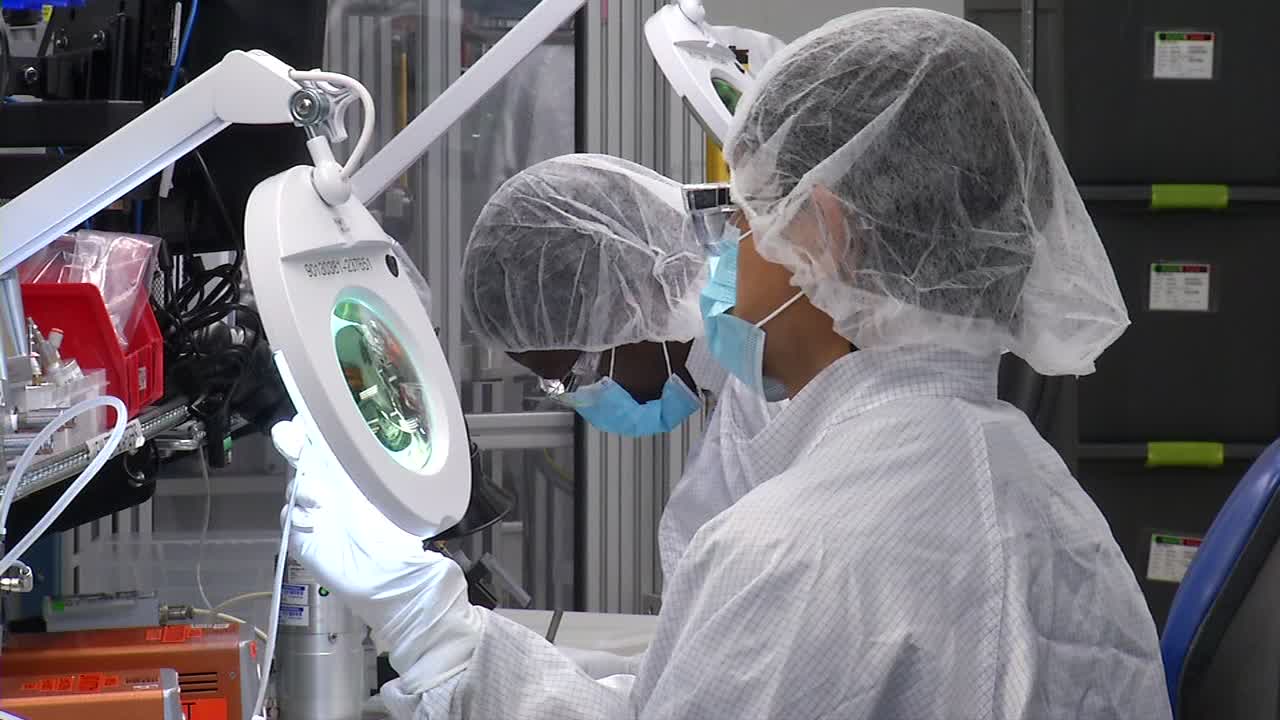Heart transplant recipient pays it forward to interest more women in science, technology careers
[anvplayer video=”5141551″ station=”998122″]
Mackenzie Tannhauser is a heart transplant survivor.
“My story with my health journey began when I was about eight years old,” she says. “When I was 12, I had a pacemaker put in and then when I was 16, I was diagnosed with heart failure and put on the heart transplant waiting list.”
After being diagnosed with an irregular heart rhythm, and with her heart disease progressing, Tannhauser received a healthy heart when she was 17.
She says that surgery saved her life and changed her life-path forever.
“It was actually my own doctor that recommended I look into biomedical engineering as an option,” Tannhauser explains. “They thought I could use my experience as a patient to really help companies design the future of medical technology.”
Now 27, she’s a biomedical engineer with Abbott Labs in Plymouth, working as a field clinical specialist.

More programs are putting an emphasis on women in STEM (KSTP).
Her job is to show doctors how to use medical devices like stents— for heart patients.
But there’s something else she’s a strong advocate for.
“I am absolutely passionate about bring more women and young people into STEM fields,” Tannhauser.
STEM is short for science, technology, engineering, and math.
Right now, the U.S. Census says only 27% of STEM workers nationwide are women.
“It’s been that way for a long time. I was the only woman my year in my major twenty-five years ago,” recalls AnnMarie Thomas, an engineering professor at the University of St. Thomas. “I think we have seen historically that these fields in engineering have been more male-dominated. As much as we want it to change, we haven’t seen it changing on a national level.”
But Thomas says there are efforts underway to get girls at the elementary, middle, and high school levels to get them exposed to STEM— and, that potential mentors like Tannhauser are leading the way.
“I loved hearing Mackenzie’s story because it’s an example of how your lived experiences, as a kid, it can shape your future, and shape the career that you pursue,” she says. “This is where diversity in STEM becomes our big issue. We want to have all the voices, all the experiences at the table.”
And there’s something else.
The U.S. Bureau of Labor Statistics says as technology becomes a bigger part of our lives, the country will need an additional one-million STEM workers by 2030.
“Women are nearly half the U.S. workforce, but they only make up 27% of the STEM workforce,” says Bryan Quick, Abbott Labs’ Director of University Relations. “That itself is a crisis.”
He says his company is trying to change that.
Quick says since 2012, Abbott Labs has hosted about 50 internships a year for high school students.
“We give our students what we call real world STEM projects, meaningful work to complete,” he notes. “It really gives them insights into what STEM careers can really be like. About 70% of our full-time engineers that we’ve hired through our high school STEM internship program were women. So, we know that program works really well.”
Abbott Labs says globally, around 44% of its STEM workforce are women— that figure, about 43% in the U.S.
For her part, Tannhauser says she travels all over the country, at least two days a week.
She not only trains doctors in the latest heart-health technology, but also follows up with patients enrolled in Abbott’s clinical trials.
Right now, Tannhauser says, she’s volunteering to coordinate STEM outreach events.
“I like to talk about my career journey and what inspired me to get into STEM, to hopefully spark interest in other young people,” she says. “I think these are the type of people we want in STEM careers. It takes passion for wanting a difference.”